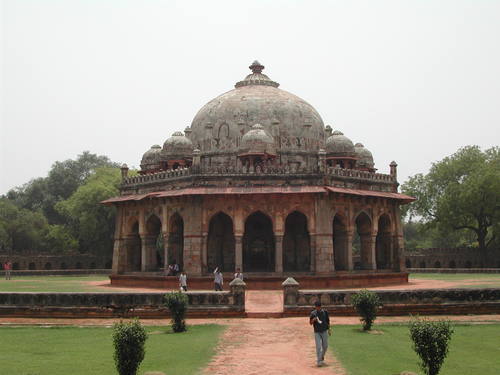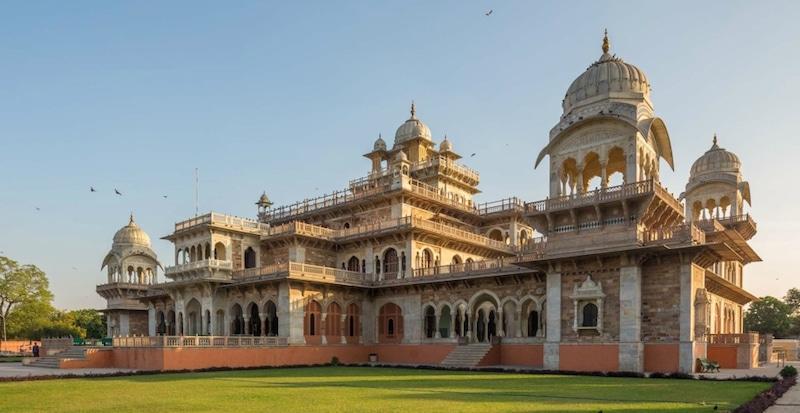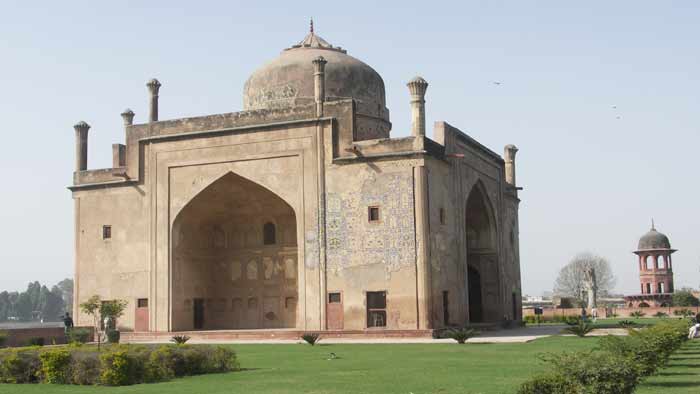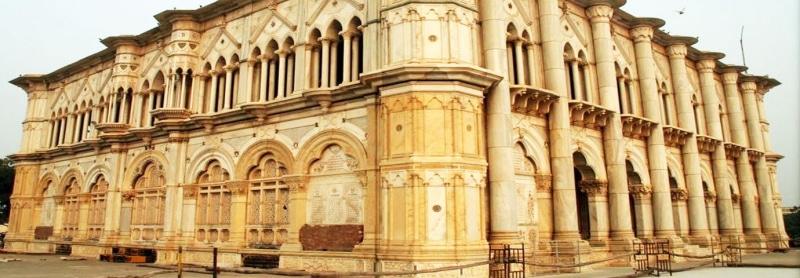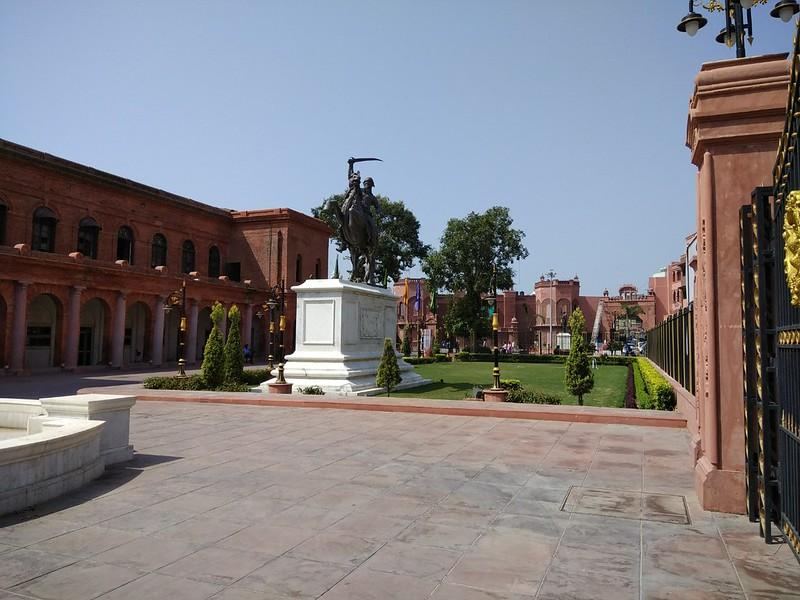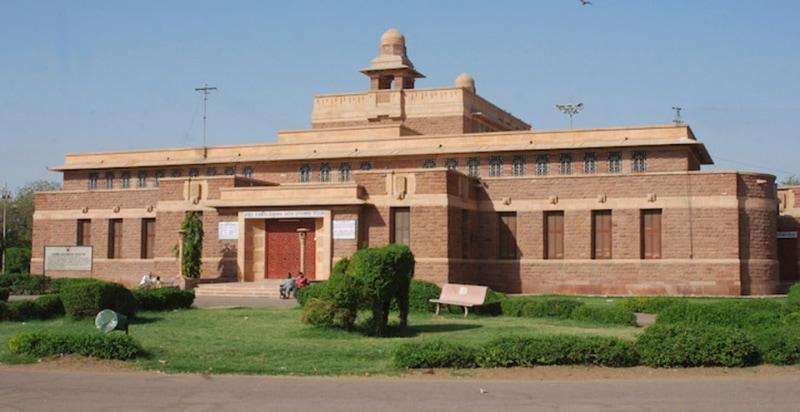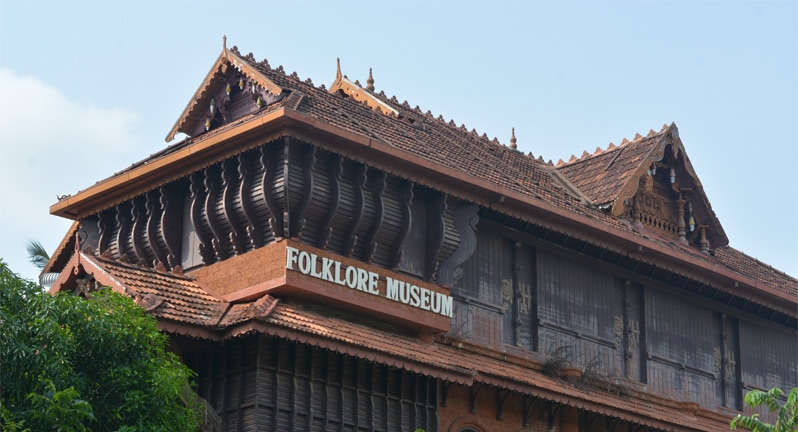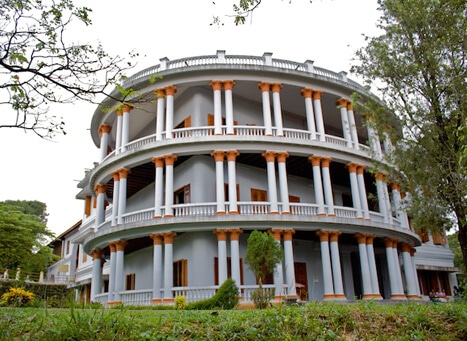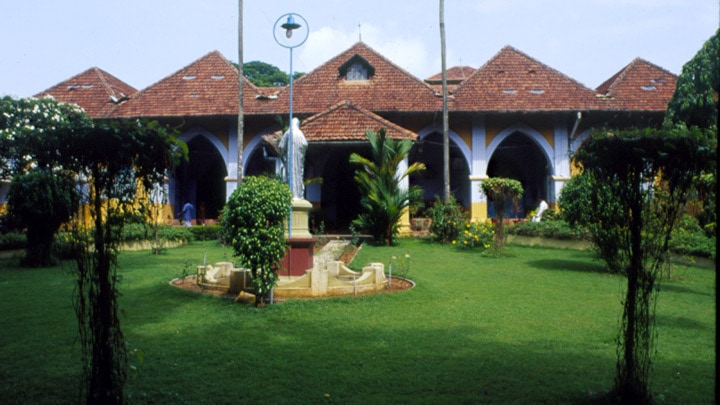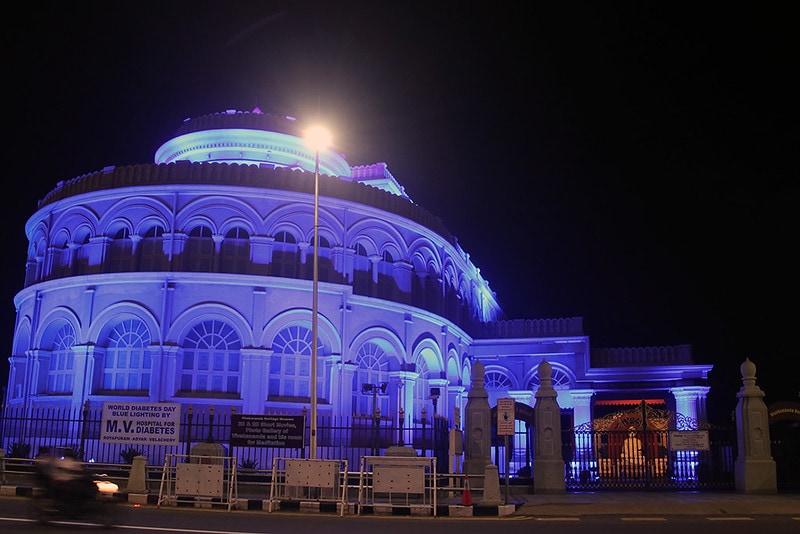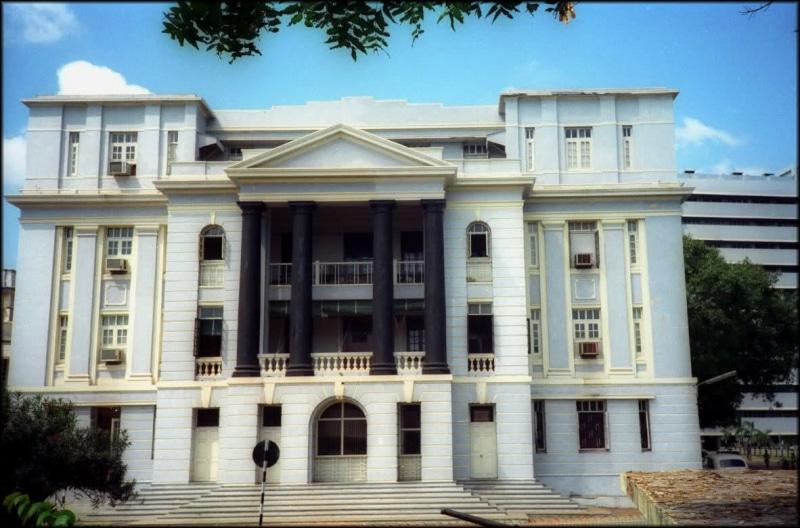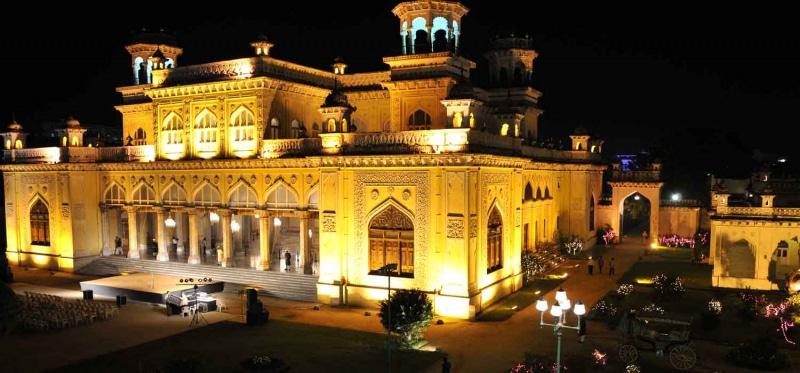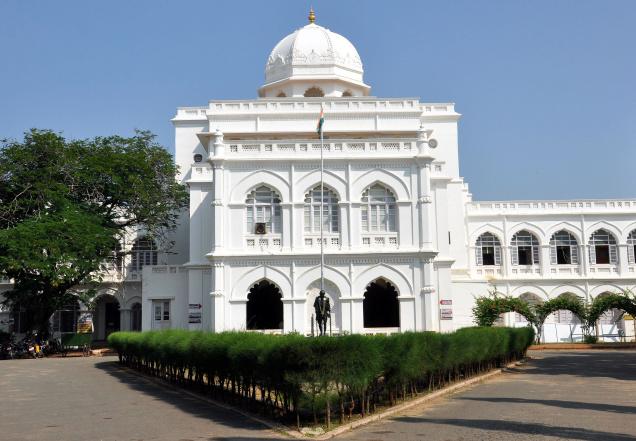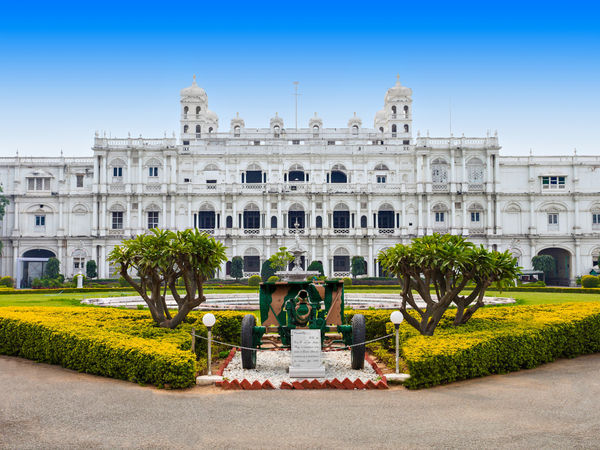Museums, India
Removed from Unnamed collection
Humayun's Tomb
This tomb, built in 1570, is of particular cultural significance as it was the first garden-tomb on the Indian subcontinent. It inspired several major architectural innovations, culminating in the construction of the Taj Mahal.
Humayun’s Tomb, Delhi is the first of the grand dynastic mausoleums that were to become synonyms of Mughal architecture with the architectural style reaching its zenith 80 years later at the later Taj Mahal. Humayun’s Tomb stands within a complex of 27.04 ha. that includes other contemporary, 16th century Mughal garden-tombs such as Nila Gumbad, Isa Khan, Bu Halima, Afsarwala, Barber’s Tomb and the complex where the craftsmen employed for the Building of Humayun’s Tomb stayed, the Arab Serai.
Humayun’s Tomb was built in the 1560’s, with the patronage of Humayun’s son, the great Emperor Akbar. Persian and Indian craftsmen worked together to build the garden-tomb, far grander than any tomb built before in the Islamic world. Humayun’s garden-tomb is an example of the charbagh (a four quadrant garden with the four rivers of Quranic paradise represented), with pools joined by channels. The garden is entered from lofty gateways on the south and from the west with pavilions located in the centre of the eastern and northern walls. https://whc.unesco.org/en/list/232
Map
Removed from Unnamed collection
Purana Qila
One of the top places to see in Delhi, the Purana Qila or the Old Fort has a lot in store for its visitors. It was built under Sher Shah Suri and is considered to be the capital of the Pandavas. Stretched across two kilometers in length, the huge red sandstone ramparts of the fort emphasize on the historical valor and aura of the times the fort must have witnessed. https://www.mapsofindia.com/my-india/travel/the-magnificent-purana-qila-or-the-old-fort
Map
Removed from Unnamed collection
Albert Hall Museum
The building gets its name from The Victoria and Albert Museum in London, the inspiration for its design. The exquisitely built Albert Hall is housed in the centre of Ram Niwas Garden. http://tourism.rajasthan.gov.in/jaipur
Map
Removed from Unnamed collection
Chini ka Rauza
Chini ka Rauza is also called as the China Tomb of Agra. This mausoleum belong to a Persian born poet, who rose to the position of Wazir (Prime Minister) during the reign of Shah Jahan. Mullah died in 1639 in Lahore. His remains were brought back to Agra, to be buried in this spot. Just like every other mausoleum of Mughals, the tomb is built to face the holy city of Mecca.
This Mughal structure has many exotic and unusual styles of architecture. The main dissimilarity is the un-proportional dome built in Sultanate style. However, the beauty of the tomb has heavily disintegrated with passage of time. The walls of the monument have worn out, but you can still see the striking enamel colors on the tiles and remains of what used to be a grand ceiling painting. The builders of the tomb used earthen pots to reduce the weight of concrete filling in the facades. This method is widely used in Egypt and Rome. https://www.travelogyindia.com/agra/chinni-ka-roja.html
Map
Removed from Unnamed collection
Dayal Bagh
India is a place inhabited by the people of different sects and religions. Radha Swami is also a faith followed by many people in India. Dayal Bagh is 15 km from Agra. It is a place, which houses the Samadhi of the founder of the Radha Swami, "Swamiji Maharaj.
The main structure is a magnificent building of 110 feet in height, built in pure white marble. One can find pietra- dura inlaid marble work actually being worked on. The building here is under construction since last 100 years and here it is a belief that construction should never stop. https://www.tourism-of-india.com/agra/things-to-do/dayal-bag-agra.html
Map
Removed from Unnamed collection
Partition Museum
The Partition of India was one of the most defining events in the history of the subcontinent. It remains till date the largest mass migration in human history. Yet, despite the extensive loss to life and property, almost 70 years later there existed a severe lacuna that no museum or memorial existed anywhere in the world to remember all those millions.
With the support of hundreds of people, who donated their time, family objects, funds, and skills, the Partition Museum worked towards opening the entire Museum in time to commemorate the 70th Anniversary of the Partition. The opening date for all fourteen galleries was decided as 17 August to mark the day that the Radcliffe award was announced. On 17 August 2017, Hon’ble Chief Minister of Punjab, Shri Amarinder Singh, dedicated the Partition Museum to the nation. It was marked as Partition Remembrance Day in tribute to the millions impacted.
Since then over a hundred thousand visitors have come to the Partition Museum. It continues to build its collections and archives and welcomes support in its continued quest to document and remember the history of the millions impacted at the time of the Partition. https://www.partitionmuseum.org/event/the-partition-museum-project/
Map
Removed from Unnamed collection
Mehrangarh Fort and Museum
Mehrangarh Fort holds the pride of place in Jodhpur because of its splendid architecture and the diverse history associated with it. Considered as one of the most formidable and magnificent forts of Rajasthan, Mehrangarh fort was built by Rao Jodha in the year 1459. The fort is spread over an area of 5 km and is built on 125 m high hill in the outskirts of Jodhpur city.
There are seven gates, which can be used to enter the Mehrangarh fort. These 7 gates are made by different rulers, and are built in honour of victory over Bikaner and Jaipur armies.
One can see the panoramic view of the Jodhpur city from this fort, which seems like a blue carpet laid at the foot of a hill. Every ruler of Jodhpur has contributed in the making of this fort. Within the fort one can see the magnificent palaces. The main palaces located in the Mehrangarh Fort are Moti Mahal, Phool Mahal, Sheesh Mahal, Zenana Dude, Takht Vilas and Jhanki Mahal. There are also two temples located inside the fort - Chamundi Devi Mandir and Nagnechiaji Mandir, dedicated to Goddess Durga and the Kuldevi respectively. https://www.tourmyindia.com/states/rajasthan/mehrangarh-fort-jodhpur.html
Map
Removed from Unnamed collection
Sardar Government Museum
Peak into the history of Jodhpur, and witness its lavish culture at the Government Museum. It is located inside Umaid public gardens and was built in 1909. The museum was constructed under the reign of Maharaja Umed Signhji, and was built by Henry Vaughan Lanchester.
The Government Museum houses around 400 sculptures, 10 ancient inscriptions, thousands of miniature paintings, terracotta artwork, ancient coins, metallic objects, arms, stuff toys, stone sculptures, inscriptions and other miscellaneous objects which are simply astonishing. Within the museum vicinity there is a well stocked library and zoo. There is a separate history section for military memorabilia which exhibits tools, weapons, memorials, brass and wooden models. https://www.tourmyindia.com/states/rajasthan/sardar-government-museum-jodhpur.html
Map
Removed from Unnamed collection
Kerala Folklore Museum
Kerala Folklore Museum is the only architectural museum in Kerala with the essence of the life and culture of the common man over the past 1000 years. It is also a cultural hub which contains:‘Face Art Gallery’- for Art & Antiques; ‘Folklore Theatre’- Live performances of traditional art forms & cultural activities.
‘Spice Art Café’ -, to experience the real culinary taste of traditional Kerala. ‘Souvenir Shop’ - to buy real ethnic antiques and tribal artefacts.
This is a treasure trove of stone, wood and bronze sculptures, ancient terracotta, Stone Age objects, jewellery, paintings, oil lamps, musical instruments, tribal and folk art, woodworks, utensils, masks and traditional art forms etc. There are around 4000 artefacts from tiny to large size on display. This unique cultural project aims to provide art education to the students and to help provide visual and academic knowledge to the art lovers, researchers and travellers from all over the world. http://www.keralafolkloremuseum.org/
Map
Removed from Unnamed collection
Sahodaran Ayyappan Museum
The Sahodaran Ayyappan Museum is a fresh combination of interactive and traditional exhibitions representing a truly authentic experience. The museum complex includes traditional thatched roof (coconut leaves) houses, one of them is where Sahodaran Ayyappan was born. This museum has a waterfront view of the River Periyar with MHP Project boat jetty. The museum illustrates the life and work of Sahodaran Ayyappan and his movements against the Caste- Madness of the Kerala Society. https://www.muzirisheritage.org/sahodaran-ayyappan-museum.php
Map
Removed from Unnamed collection
Hill Palace
The Hill Palace is Kerala's first heritage museum located at Thripunithura in Ernakulam district. It has a huge collection of the former Maharaja of Kochi. At present, this official residence of the royal family has become one of the state's largest archaeological museums. Built in the year 1865, there are 49 buildings in the complex which are designed in the Kerala's architectural style. Spread over 52 acres of land, the complex is beautifully landscaped and houses a deer park and horse riding facilities. The complex of museum is a home to various rare species of medical plants. At present, this museum is protected by the Kerala State Archaeology Department. https://www.tourmyindia.com/states/kerala/hill-palace-tripunithura-ernakulam.html
Map
Removed from Unnamed collection
Indo-Portuguese Museum
The Indo-Portuguese Museum situated in Fort Kochi throws light on the strong Portuguese influence in both the art and the architecture of the region. https://www.keralatourism.org/destination/indo-portuguese-museum/336
Map
Removed from Unnamed collection
Vivekananda House
Tudor Ice Company was built in 1842 to store ice blocks. From then it is being called as Ice House even after the company’s closure. Bilagiri Iyengar, a noted Lawyer bought it in 1885 and named it “Castle Kernan” in honour of his Justice friend. Vivekananda stayed at the Ice House between 6 February 1897 to 14 February 1897. Every year this event is celebrated as Vivekananda Nava Rathiri. The pujas and festivals performed by the Ramakrishna Mutt were shifted to New Mutt premises in Mylapore. But the premises continued to be the Memorial of Swami Vivekananda. Later the Government took over the building in 1930. In 1963, on his birth centenary, it was renamed as Vivekanandar House. In 1999, on Centenary of Swamiji’s return to India from the United States, the house was renovated and opened a fresh by the then Chief Minister. http://www.tamilnadutourism.org/places/CitiesTowns/chennai02.aspx?catid=010101P03
Map
Removed from Unnamed collection
Fort St. George
It is a prestigious land mark of the city. British bought this piece of land from the King of Vijayanagar on 22nd August 1639 and built the Fort St. George and named the area as Madraspattinam. St.Mary�s Church built in 1860 is located inside the fort complex. http://www.tamilnadutourism.org/places/CitiesTowns/chennai01.aspx?catid=010101P01;pg=2
Map
Removed from Unnamed collection
Chowmahalla Palace
Grandeur of rules, glory of its past, glimpse of their enigmatic way of living, are still alive in the form of palaces like Chowmahalla Palace, a place worth visiting when on a Hyderabad tour.
Built in the 18th century, almost 200 years ago, the Chowmahalla Palace is one of the popular sightseeing places in Hyderabad. The literal meaning of this place is “Four Palaces” with “Chow” means four in Urdu and “Mahalat” which is the plural of “Mahalel” meaning palaces. Chowmahalla palace is said to resemble Shah Palace of Tehran in Iran.
It is said that Chowmahalla Palace used to have around 7000 attendants on any given day. For its grandeur and charm, it has been often compared to the Enchanted Gardens of the Arabian Nights for its grandeur. https://www.hyderabadtourism.travel/chowmahalla-palace-hyderabad
Map
Removed from Unnamed collection
Golconda Fort
Golconda is one of the famous forts of India. The name originates from the Telugu words “Golla Konda” meaning “Shepherd’s Hill”. The origins of the fort can be traced back to the Yadava dynasty of Deogiri and the Kakatiyas of Warangal. https://www.hyderabadtourism.in/places_visit.php
Map
Removed from Unnamed collection
Salar Jung Museum
This museum houses one of the biggest one-man collections of antiques of the world by Mir Yousuf Ali Khan, Salar Jung III. The objects d’art include Persian carpets, Moghal miniatures, Chinese porcelain, Japanese lacquerware, famous statues including the Veiled Rebecca and Marguerite and Mephistopheles, a superb collection of jade, daggers belonging to Queen Noor Jahan and the Emperors Jahangir and Shah Jahan, Aurangzeb’s sword and many other fabulous items. https://www.hyderabadtourism.in/places_visit.php
Map
Removed from Unnamed collection
Taramati Baradari
Taramati Baradari is located at Ibrahimbagh, on the Osman Sagar (Gandipet) Road, close to Golconda. The complex is spread over a sprawling 7-acre area amidst lush green environs with the backdrop of the famed Golconda Fort. The heritage monument built by the Seventh Sultan of Golconda is accessed from the complex. https://www.hyderabadtourism.in/places_visit.php
Map
Removed from Unnamed collection
Government Museum and Art Gallery
The Government Museum and Art Gallery in Sector 10 of Chandigarh has a fine collection of stone sculptures of the Gandhara period. The museum is the place to see the prehistoric fossils and artifacts along with modern art and miniature paintings. T http://chandigarhtourism.gov.in/
Map
Removed from Unnamed collection
Gandhi Museum
Housed in the old Palace of Rani Mangammal, the Gandhi Museum depicts the highlights of the freedom struggle and contains a picture gallery of the Gandhian movement. http://www.madurai.tn.nic.in/tourism.html#5
Map
Removed from Unnamed collection
Lohagad Visapur
At the time of the rule of the Maratha king Chhatrapati Shivaji Maharaj's, the one thing that Maharashtra got in abundance was forts. With its hilly terrain and the ruler’s expertise at establishing forts at strategic points, the state can now lay claims to have some of the finest, strongest, and the most unique forts of India. https://www.maharashtratourism.gov.in/treasures/fort/lohgad-visapur
Map
Removed from Unnamed collection
Raja Dinkar Kelkar Museum
As one of the largest one-man collections in the world, the Raja Dinkar Kelkar Museum in Pune is fascinating for its curios and artifacts, ranging from beautifully embroidered textiles to sculptures and antique copper vessels to the swords of the Peshwas. And as you walk through its various sections, history literally comes alive. https://www.maharashtratourism.gov.in/treasures/museum/raja-dinkar-kelkar-museum
Map
Removed from Unnamed collection
Jai Vilas Mahal
The Jai Vilas Mahal that is also known as the Jai Vilas Palace was built in 1874 by the Maharaja of Gwalior called Jayajirao Scindia. This palace is said to be an 11th century palace and a visit to this palace must be done if you visit Gwalior. http://www.india.com/travel/gwalior/
Map

